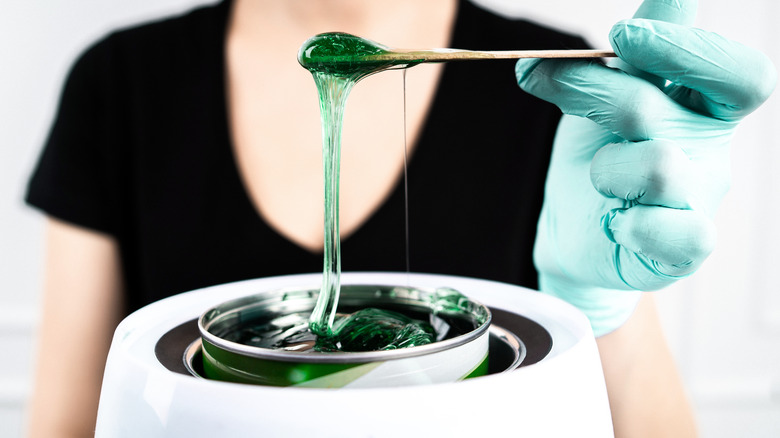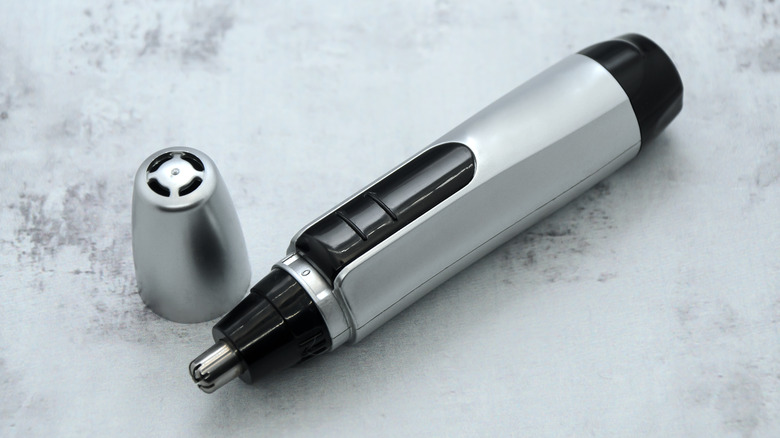Is It Safe To Wax Your Ear Hair?
As we grow older, some people begin to notice the appearance of tragi hairs out of their ears. Otherwise known as terminal hairs, tragi hairs are long, dark, twisty strands of hair that emerge from the exterior ear canal, most often in older men (via Healthline). Standing in the way of bacteria, dust, and debris from entering the ear, tragi hairs and earwax operate side by side to help keep our ears clean and healthy.
Why some people develop ear hair later in life and others do not still remains somewhat of a scientific mystery. While some people remain unbothered by the presence of tragi hairs, others find them to be problematic. For example, because these hairs take up a good deal of space within the ear canal, they may increase one's risk of swimmer's ear, in which moisture becomes trapped in the ear, leading to possible infection.
Others, however, may simply wish to have ear hair removed for aesthetic reasons. With so many hair removal options available to us, some people turn to waxing as their go-to hair removal method. But is waxing a safe and effective means of hair removal for our ears too?
Leave waxing to the professionals
Generally speaking, sticking anything inside our ears poses a risk for injury. Researchers from a 2017 study published in the Journal of Public Health in Africa gathered survey data from more than 200 university students. The study findings revealed a 2.4% risk of ear injury among nearly 80% of university students who used cotton swabs to self-clean their ears. Such injuries included itchiness, earache, or ear discharge.
Similarly, dispensing hot wax into our ears can pose its own risks. For this reason, experts at GQ state that under no circumstances should we ever wax the hairs inside our ear canal.
On the other hand, however, Melanie Mari, owner of Bare Skin Studio, told Dollar Shave Club that waxing may be safer when done by a professional. "Waxing gets rid of all the hair — including the peach fuzz that lines the outside of the ear — in one shot," Mari explained, saying that waxing can prevent the regrowth of ear hair for as long as six weeks. However, Mari suggested steering clear of home-waxing kits and instead opting for professional ear waxing. After all, a professional has a better view of the side of our head than we do.
A safer alternative to waxing
So if home-waxing isn't the best way to go about removing ear hair, are there any other at-home methods that may be a better alternative? As it turns out, many experts sing the praises of ear-hair trimmers. Also great for removing unruly nose or eyebrow hairs, these gadgets offer added protection by concealing the blades behind a thin metal barrier (via GQ). Unlike shaving with a razor, this keeps your ears safe from direct contact with the blades.
Melanie Mari explained to Dollar Shave Club that ear-hair trimmers are both easy to use and come with the added bonus of being pain-free (unlike waxing). Just be careful not to insert the trimmer too deep into the ear, as doing so increases the risk of injury. Rather, just stick to any strands visibly sticking out of the ear and trim them down until they're out of sight.
These devices do have one drawback, however. Because ear-hair trimmers only remove hair at the surface level — as opposed to waxing, which gets down to the root of the problem, so to speak — trimming will need to be done more frequently, such as every few days or so.



